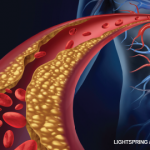A 65-year-old female patient comes in for a routine follow-up visit for osteoarthritis. The patient reports that her right knee has been more swollen and stiff in the past three weeks. The patient is on celecoxib and ranitidine. The patient had an intraarticular injection of her knee six months ago, with marked improvement in her knee pain and swelling. The patient also mentions that she has been having abdominal pain and nausea after she takes the celecoxib. She has never experienced these symptoms before. On examination, patient is alert and oriented. Her vital signs are normal. Her height is 5’7”, her weight is 290 lbs., and her BMI is 40.1. Her head, eyes, ears, nose, and throat exam is normal. There is no lymphadenopathy. Her lungs are clear. Her heart has regular rate and rhythm, with no murmurs or friction rubs. She has good peripheral pulses. Her abdomen is soft, nontender, and has no mass or hepatosplenomegaly. The patient’s physical examination is remarkable for a large effusion of the right knee.
The physician explains therapeutic options to the patient, including risks and benefits, and performs an aspiration and injection of the right knee. The patient is injected with 20 mg of Synvisc-one. The patient is taken off of celecoxib. A new prescription for pain is prescribed, and the patient is given discharge instructions on postarthrocentesis care and follow-up. The patient has Trailblazer Health Enterprises as her Medicare insurance.
How should this be coded? click here for the answer.



